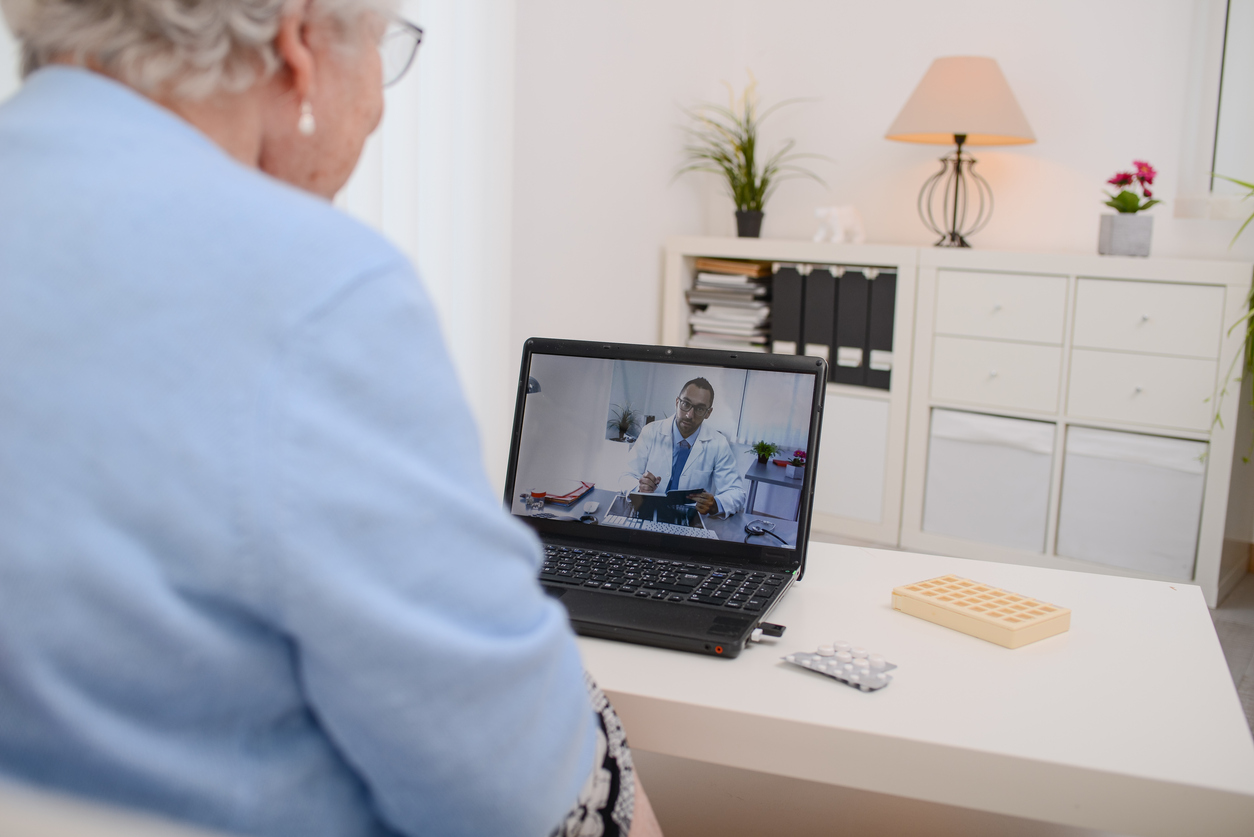The coronavirus outbreak that has infected almost 3 million people worldwide and killed nearly 200,000 (including more than 50,00 in the U.S. alone) will “forever change the way consumers seek and receive healthcare,” said Arielle Trzcinski, a senior analyst at Forrester.
“While the pandemic will prove the value of virtual care in a crisis, it will also demonstrate the effectiveness for ongoing chronic care management,” she said. “This moment will have a lasting effect on the adoption of virtual care and accelerate the shift from in-person care to virtual first engagement for multiple conditions and use cases.”
Telehealth broadly involves the remote provision of healthcare between doctors and patients, most often by way of video consultations, though it can also be used for teleradiology and remote patient monitoring.
Use of telehealth applications has been rising steadily for years, though adoption has varied across different organizations. As of January, only 24% of U.S. healthcare organizations had a virtual care program in place, according to Forrester.
That’s changed rapidly in recent months as COVID-19 spread, forcing people to avoid doctors’ offices, hospitals, medical clinics – and, of course, the workplace. Into the resulting gap, telehealth companies have moved to enable doctors to connect with their patients remotely.
Telehealth firms see ‘explosive’ spikes in demand
The crisis has led to telehealth vendors seeing huge spikes in demand, said Daniel Ruppar, a consulting director at Frost & Sullivan; some have gotten a year’s worth of traffic on their platforms in the space of a month.
“That is explosive growth,” Ruppar said. “Similar to how other consumer platforms like Zoom have exploded, that's the same impact that’s gone on in telehealth.”
He was referring to the Zoom videoconferencing platform, which has had a quick, but rocky, growth spot as work-from-home employees have turned to what is seen as an easy-to-use way to video chat with colleagues. That, in turn, exposed a number of security vulnerabilities in the platform that Zoom is working to correct.
For Amwell, a telehealth software vendor, the recent surge meant a 2,000% increase in visits on its platform as demand for virtual consultations surged. The rapid uptick in demand meant Amwell had to work with its customers deploy its software much faster than normal.
“Normally, we spend two to four months deploying and implementing a system for a health system; there's lots of integration, we want to be embedded in their EHR [electronic health record systems], etc.,” said Mike Baird, president for customer solutions at Amwell.
“Obviously we didn't have time for that in this crisis, and so we had an offering that we could literally stand up in three or four days,” Baird said.
In a shift, the company began offering customers short-term access to its platform – for a few months rather than requiring multi-year contracts. “We had dozens of systems take us up on that to get up to speed very quickly,” Baird said.
It was a new experience for many. Although various telehealth tools have been available for some time, most patients using virtual care in March (83.9%) were doing so for the first time, according to an IDC report.
While the need for remote care will not be as acute once the pandemic crisis subsides, demand for telehealth systems will likely remain high. Forrester now expects more than one billion virtual care visits this year, the vast majority of them related to COVID-19.
“There's definitely going to be a behavioral change with both providers and consumers around telehealth that will be lasting,” said Ruppar.
As patients become more familiar with the technology, teleheath systems could be used widely for non-COVID-19 issues, said Lynne Dunbrack, a research vice president at research firm IDC’s Health Insights Division.
“…After the crisis subsides, there will be a patient population that will want to continue to receive care online for some things, like managing chronic conditions, follow-up visits after an inpatient stay, surgery or to discuss diagnostic results,” she said.
In this case, it will be important for healthcare providers to ensure that patients are aware of the availability of services.
“While patients may be aware of virtual care services provided by their health plan or employer, they many not be aware that their healthcare provider is also offering virtual care visits for non-COVID-19 issues,” she said.
Baird is bullish on the long-term prospects for adoption after the crisis. “While we expect that the waters will recede a little … we think that the providers that have now used [telehealth] and have seen that this is very useful in surveying their patients, and to help them reach more people and provide quality care – there's no way that doesn't stick in some way.”
Telehealth regulation changes spur growth, too
A key factor in the recent boom has been the rollout of changes to government regulations around the use of telehealth systems. This includes, crtiically, the expansion of insurance reimbursement by the Centers for Medicare & Medicaid Services (CMS) to extend coverage for telehealth appointments. And HIPAA data privacy rules have been relaxed to enable the use of consumer video apps such Apple’s FaceTime and Microsoft’s Skype as a temporary means of connecting doctors and patients.
“When you have major health plans and insurance companies embrace and enable coverage for telehealth or other things of that nature, that's definitely helped,” said Ruppar.
“The most significant impact is from [the] expansion of payment from CMS for telehealth, including for new patient use,” he said. “The HIPAA relaxation on platform selection does help as well, especially for practices which did not deploy telehealth, [allowing practices to] still conduct business and patient care.”
While it is likely that some of the rule changes, such as those involving HIPAA enforcement, will be pulled back when the current crisis ends, certain regulations that are beneficial to the deployment of telehealth could remain in place.
“The government has moved very rapidly to pull down any remaining regulatory [barriers] that were slowing telehealth down,” said Baird.
“We’d like to see that continue and we hope that it will,” he said. “Now that people have seen [telehealth’s] effectiveness, they've seen that it can treat patients, I think most legislators will be hard-pressed to give justifications for rolling all of that back.”













